


Part One ~ Tomorrow's Ship Today!
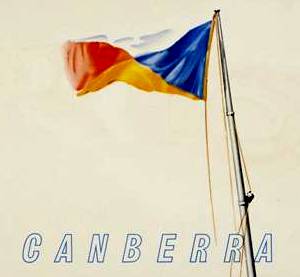
This is to introduce Canberra, a ship destined for greatness. Large, fast, luxurious, she is a £15 million blend of beauty and craftsmanship. Of 45,000 tons, and capable of travelling at over 30 m.p.h., Canberra carries more passengers - 548 in First Class and 1,690 in Tourist Class - than any other passenger ship in the world. But size and speed alone do not make Canberra the world's most advanced passenger liner. What, then, gives greatness to a ship ? What makes this mass of metal and machinery, and seeming chaos of pipes and cables, into a total that is greater than its parts? First, the will of the creators to surpass what has gone before. It would be easy to stand by an earlier pattern, to duplicate an earlier success. But that is wisdom for dinosaurs. Greatness does not come that way in ship design. Naval architects must not only move with the times, they must also try to anticipate the trends and changes during the twenty-five years' lifetime of the ship they plan. New thinking is needed. Countless questions must be Canberra they have been asked... and answered brilliantly. Canberra is indeed a ship with a purpose. Take a look first at her external appearance . . . her clean, functional lines, her uncluttered deck spaces. In place of conventional funnels amidships she has two slim, streamlined funnels sited un≠obtrusively aft. By placing the massive, space-consuming engine-rooms at the after end of the ship, the widest, most 'sea comfortable' part of Canberra is available for extra and improved public rooms and cabin accommodation. Noise and vibration are removed from the central living space, which is planned on spacious lines. An extra deck, to make fourteen, has been added with no increase in weight by a revolutionary use of aluminium for the entire superstructure. Lifeboats are carried inboard on a lower deck than usual, so that there are greater spaces on the upper deck. P&O Canberra Introductory Brochure 1961
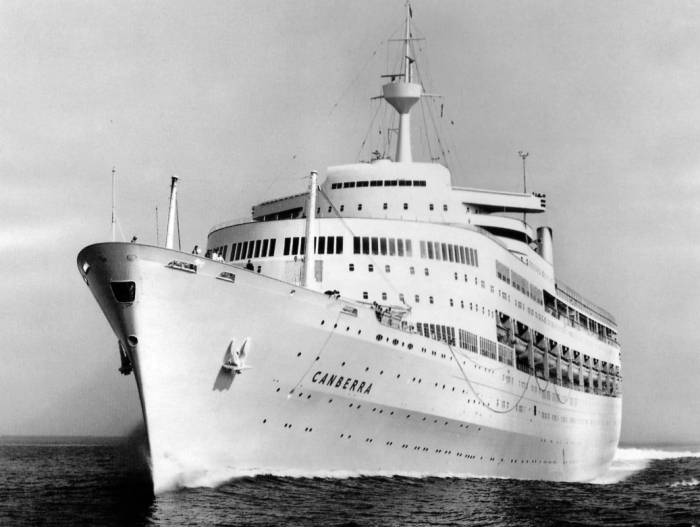
Canberra was named on 17th March 1958, at Harland and Wolff's Belfast shipyard, and launched by Dame Pattie Menzies GBE, wife of the then Prime Minister of Australia and her official sponsor, on 16th March 1960. At a cost of £17 million, she was P&O's most expensive ship to date, and the most technically advanced ship of her age.
Early in 1956, the P&O board had asked a number of large British shipbuilders to tender for a new liner to operate between the United Kingdom and Australia. Harland & Wolff, who fifty years earlier, had built the Titanic, and her sister ships Britannic and Olympic for the White Star Line, won the tender.
The new build, designated Yard Number 1621, would weigh in at 45,000 gross tones, with a beam of 103ft and a length of 814ft. She would be P&O's largest ship to date.
The new ship would be of a radical new design, somewhat similar in appearance to Shaw, Savill & Albion's ss Southern Cross, built at Harland & Wolff's Belfast yard in 1955
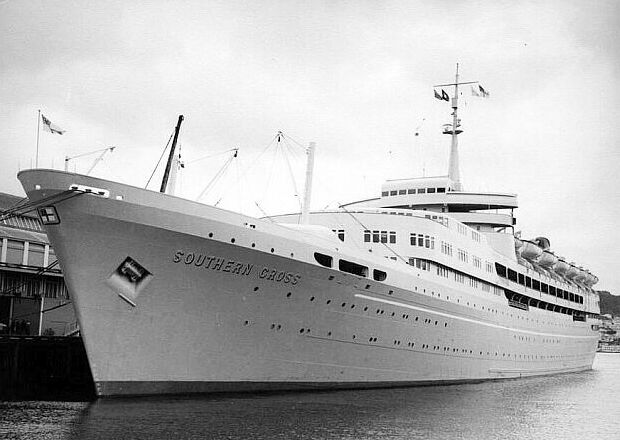
At first glance, viewed from the port or starboard bow, there appeared to be a striking similarity - but when viewed in profile, Shaw Savill's flagship lacked the pure lines and aesthetic good looks of Canberra. Some six years older than Canberra, and half her size, she appears somewhat dated by comparison.

Right from the start, the Canberra project caught the attention of John West, an eager young naval architect, who at the time, was working on the planning of two new P&O tankers - sadly destined to bear the names of two more august passenger ship predecessors, Maloja and Mantua. West was concerned that his initial perusal of the new passenger ship's plans suggested a traditional design more akin to the much older Straths. As far as he was concerned, passengers deserved to be afforded pride of place, in uninterrupted spaces amidships, while the propelling, auxiliary machinery and other services were placed right aft, as they were in his tanker designs. West set to work, closely studying the designs for Southern Cross, and in his own free time, prepared initial concept drawings of a radically new-look P&O liner. With her entire above waterline mid-body free of funnel uptakes, engine room access hatches, ventilation shafts etc, his new ship's interiors would be an open-plan, inter-connected sequence of spacious public rooms. His hard work paid off. In 1955 John West was appointed head of the basic design team. While working on the project he was to be promoted again and again, until he was in overall charge of the design and supervision of the building.
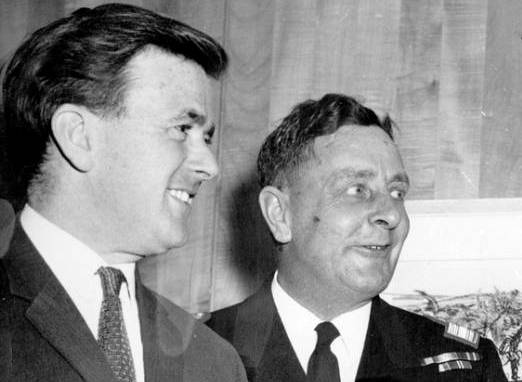
John West and Commodore G.A.Wild, Canberra's first Captain.
Photo: Herald & Weekly Times portrait collection, State Library of Victoria
The new P&O ship's propulsion machinery was to be placed aft, as in Southern Cross, thereby leaving the greatest part of the ship available for passenger accommodation. Unlike Southern Cross, she would have two funnels, placed aft and side-by-side. Canberra's main machinery was to be turbo-electric, something that P&O had gained experience in with the Viceroy of India, Strathnaver and Strathaird. Her steam turbo-generators would produce some 85,000 shaft horsepower, five times that of the Viceroy of India of 1929 vintage. For the first time, welded aluminium would be used in the fabrication of her superstructure, saving weight topside and providing an additional 200 passenger cabins.
Canberra had the biggest all-welded superstructure of any ship then built. The extensive use of aluminium reduced the ship's weight, and so allowed an extra 200 cabins to be incorporated in the design. Many of these could be transformed in minutes: accommodating a family of four on the outward voyage to Australia, for instance, and converting to two-berth cabins with private shower and toilet for the return journey. John West was involved in every aspect of the design, from the engineering to the new ship's cutlery. He was instrumental in commissioning the interiors of public rooms from Sir Hugh Casson, and commissioned canvasses for them from a young artist called David Hockney.
In 1962, at just 35, John West became the first person to receive the Prince Philip Medal for Special Scientific Achievement. He went on to chair the Fellowship of Prince Philip Medallists.
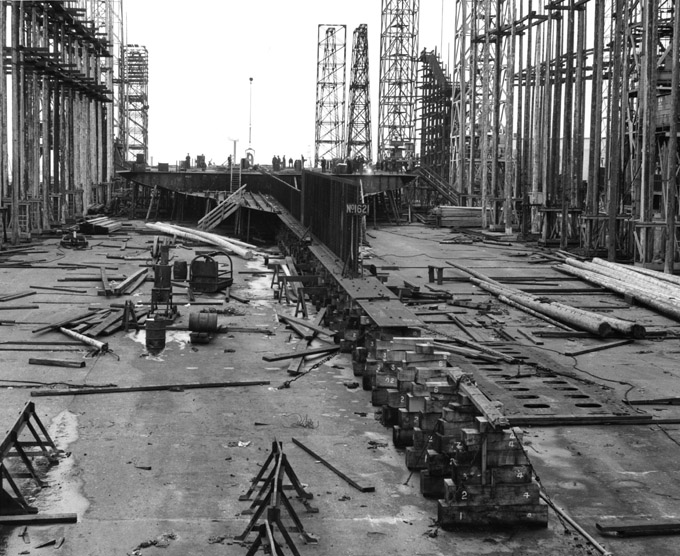
The first steel was cut on Monday, 23rd September 1957, on Slipway Number 14, Queens Island, Belfast, and the first keel plates laid. In March the following year, P&O's Chairman, Sir Donald Anderson, announced that the new ship would be called 'Canberra', after Australia's capital city.
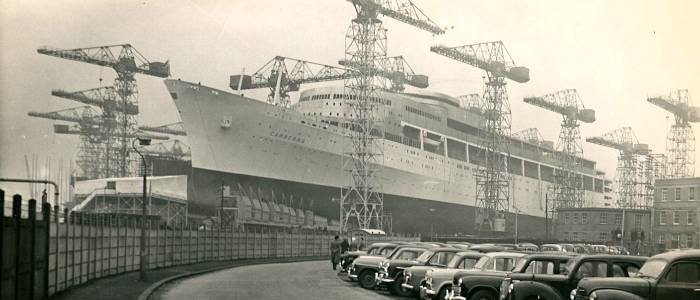
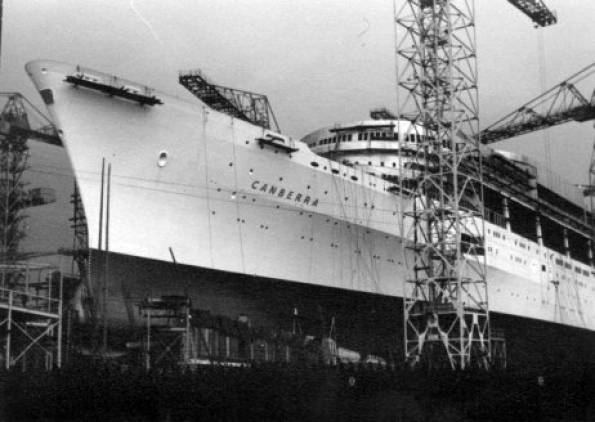
Canberra raised a great deal of interest, both in the UK and across Europe and a large model of the ship was displayed at the Brussels International Fair in 1958, and at Olympia in London, and at the Queensland Centenary Celebrations in Australia.
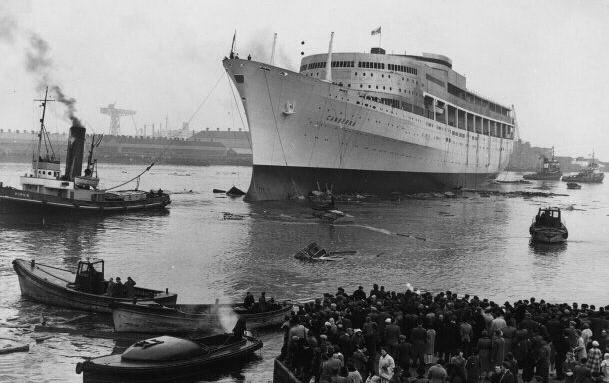
Three hundred guests gathered to watch the launch, with another estimated 11,000 onlookers cramming in and around the shipyard to watch. Dame Pattie Menzies, the ship's sponsor, was the wife of the Australian Prime Minister, and just before the launch, she attached a sprig of white heather to the bottle of Australian wine she had brought with her, to smash, according to long established tradition, against the new ship's stem. With the ship safely afloat and with tugs fore and aft, she gently navigated the Musgrave Channel, under tow to the Thompson Wharf for fitting out, which was completed three years later.
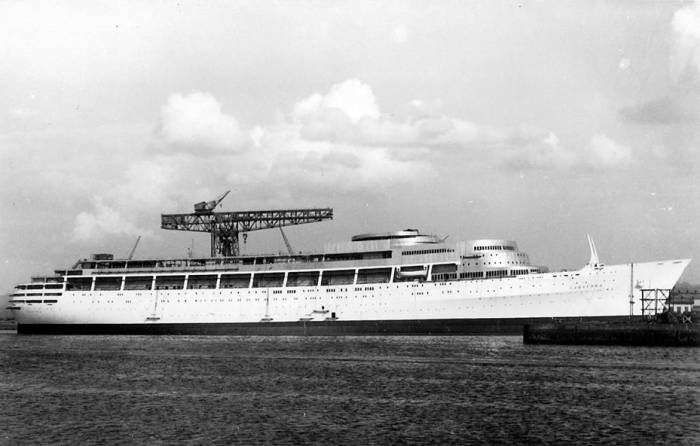
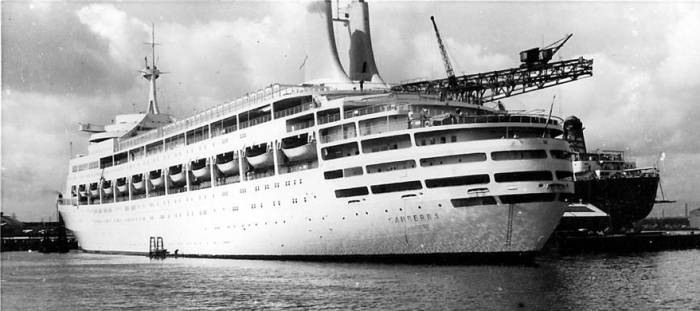
All photos courtesy of the Harland & Wolff archive
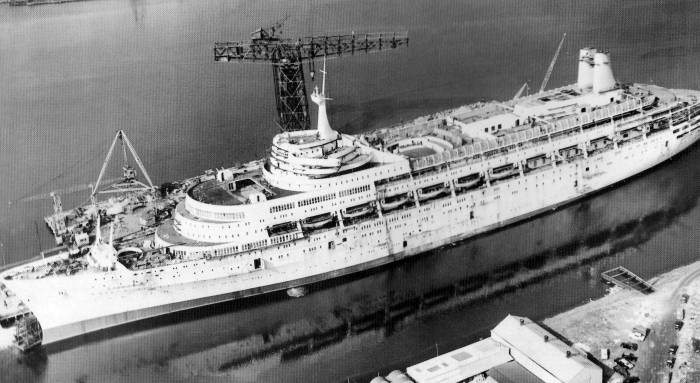
Canberra early in 1961, fitting out almost complete. Her innovative underdeck lifeboat stowages clearly discernible on the port side.
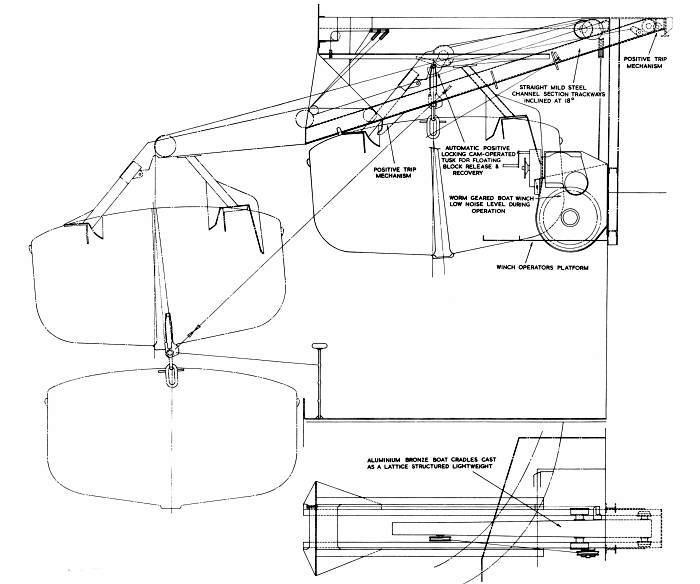
Lifeboat stowage arrangement of Canberra's innovative, underdeck davits
Canberra was also the first P&O liner to be fitted with a bow-thruster, and the first British passenger liner to use AC - alternating current as power.
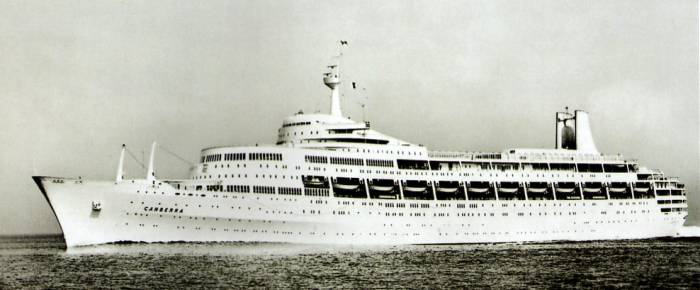
Builders Trials, 29th April 1961
Canberra underwent builders trials on Saturday 29th April in Belfast Lough. At full power, she trimmed down by the stern to such a degree that her fore-foot was almost clear of the water - an alarming sight for John West, her designer, the team from P&O's technical department, and her naval architects and builders from Harland and Wolff. The adoption of a turbo-electric propulsion system, that was much heavier than conventional steam turbines, although creating a great saving of space amidships (the traditional location for boilers, turbines and reduction gearing) had been achieved at some cost. Despite their considerable care and endless calculations, Canberra turned out to be more than 500 tons overweight aft. Due to their tight timescale, the only solution they could come up with in the circumstances, was to remove non-essential fittings from tourist class areas, and add 500 tons of concrete to her forward compartments.
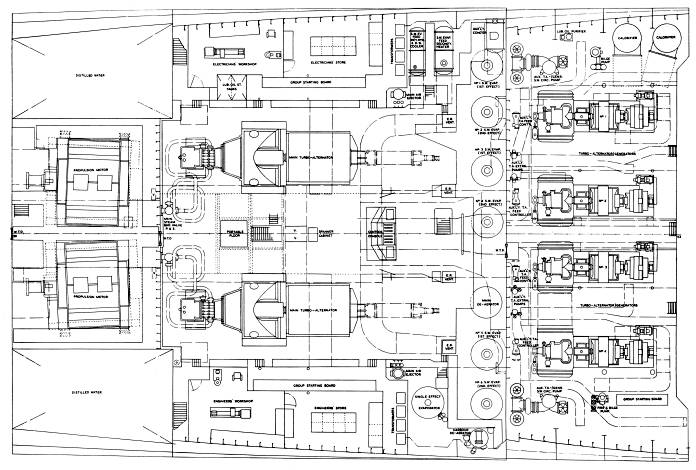
Layout of Canberra's Engine Room and Generator Rooms
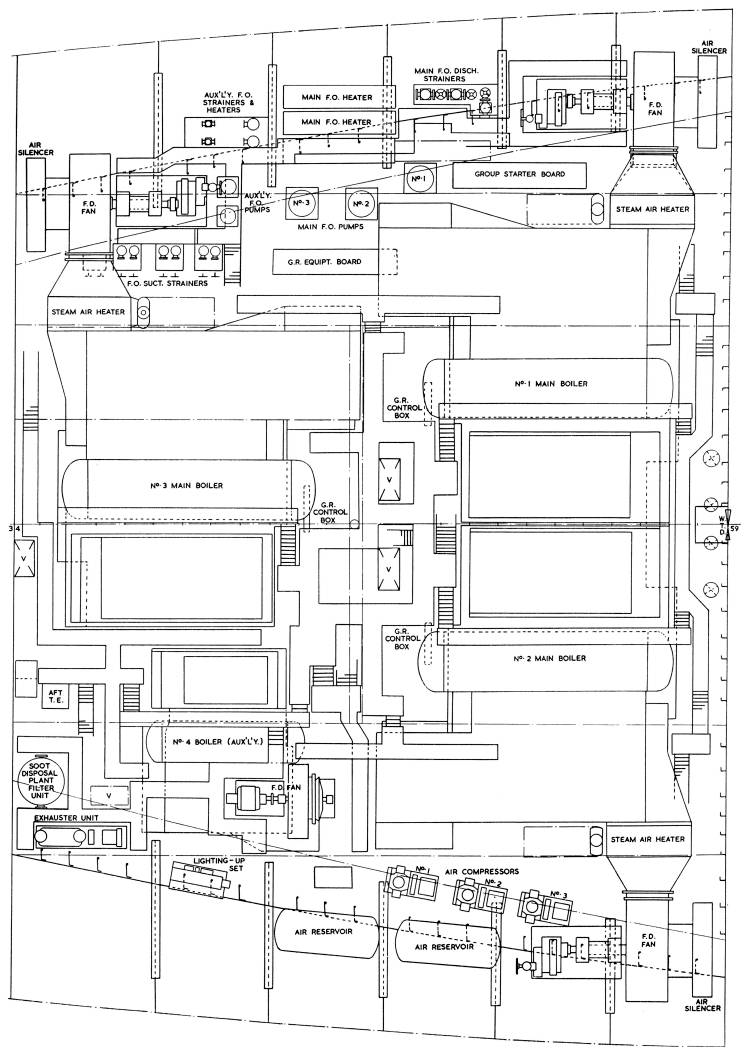
Canberra's Boiler Room Layout
two, British Thompson Houston (AEI) doubled-up synchronous drive motors, were housed in a compartment immediately forward of this. The twin, 32,200 kW power-station type 6,000 volt, three-phase AC propulsion turbo alternator sets, were in the main engine room, immediately ahead of these.
Profile of Canberra, with space taken up by machinery highlighted in blue. and forward ballast in red.

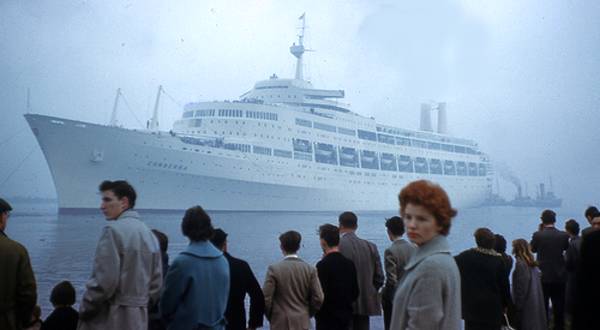
Canberra departs Belfast for Southampton

Canberra's design was highly focussed on the advantages of her fully aft machinery installation. Consequently a great deal of design effort was required to produce a hull form that would support the concentration of powerful machinery aft - against the fineness of hydrodynamic form forward, needed to produce a design service speed of 27.5 knots. This had to be done in a way that would maintain low centres of buoyancy and gravity - and a longitudinal centre of buoyancy, that was as close to amidships as possible

Harland & Wolff's Original Builder's Drawings - Deck by Deck

Captain & Officers Accommodation Deck and the Bridge and the 'Casing Top' under the twin funnels.

Games Deck, the top deck open to passengers, with a games area and cabins for female staff and engineers.

Arena Deck, with entertainment facilities for first and tourist class passengers.

Promenade Deck, with lounges, bars and a 'teenagers' room'.

A Deck, with cabins and cinema.

B Deck, showing cabins and lifeboats.

C Deck, passenger and crew cabins

D Deck, passenger and crew cabins

E Deck, dining areas and galley

F Deck, stewards' cabins

G Deck, tourist class and crew cabins.

Tank Tops, the lowest deck, with fuel tanks and propellers.
The above
drawings are archived at Lagan Legacy, The Barge, 1
Lanyon Quay, Belfast BT1 3LG

Speed trials off the Isle of Arran, in Scottish waters, 18th May 1961.
After two weeks in Southampton during which time fitting out continued, she left for her acceptance trials on the Clyde, achieving an impressive 29.27 knots over the 'measured mile'. Unfortunately, her longitudinal stability problems would resurface again in the not too distant future.....
After the official handing-over ceremony, Canberra sailed down the west coast of England, close inshore, the Company keen to show her off to the general public. Onlookers at Lands End were able to watch her steam past, and then at Torbay, she was surrounded by a flotilla of small boats. She reached Dover, then turned back for Southampton, where she berthed at the new £300,000 cruise terminal - soon to be replaced by the Mayflower Cruise Terminal, built especially for her and Orient Line's new flagship, Oriana. Throughout the coastal voyage, 300 Harland & Wolff employees fought against the clock to get Canberra's interiors ready for her maiden voyage.
Canberra's interiors were designed by a team, headed by Sir Hugh Maxwell Casson FRIBA, whose brief was to produce a range of rooms and facilities of a higher standard than anything seen before in a British passenger ship. Sir Hugh had been a director of architecture for the 1951 Festival of Britain and in 1961, held the august position of Professor of Interior Design at the prestigious Royal College of Art in London. He came with impeccable credentials, having also designed the interiors of the Royal Yacht Britannia.
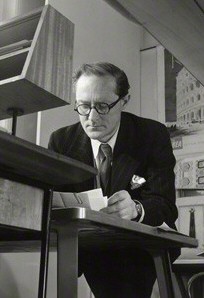
His parents had first met on board a P&O steamer, while on passage to India, which gave him a personal, family interest in the project. Sir Donald Anderson, P&O's Chairman, told him, 'that as to taste, all decisions are to be made by you , although there is no one better fitted than my brother, Colin, to guide decisions on anything upon which you want a ruling - You are responsible for choosing and Colin for authorising.' As a result, Canberra was not only fitted out with 'functional modernity' of Colin Andersons Orient Line ships, but had much of the frivolity and colour of the Festival of Britain.
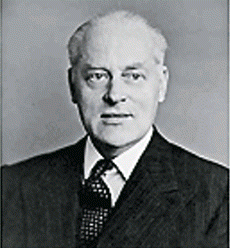
Ruth Artmonsky, in her book, Shipboard Style - Colin Anderson of the Orient Line, writes, 'The 1930s saw a sea change in the interior design of ocean liners. The great Edwardian boats on the Transatlantic routes, ornate with Jacobean, Georgian and Louis Quinze style furnishings, had resembled stately country mansions, aiming to cocoon their passengers from any notion that they were actually at sea. The Cunard liners of the 30s, the Queens Mary and Elizabeth, along with such Continental rivals as the Normandie, were to exchange the pomposity of the earlier boats for the glitzy, jazzy art deco of New York hotels. Two young men, Colin Anderson, a director of the Orient Line, and Brian O'Rorke, his architect, turned, for the new 30s Orient Line boats, on their Australasian routes, to the functionalism of the Bauhaus, 'fitness for purpose'. Starting with the Orion in 1935, they saw boats as' vehicles at sea', so that their design emphasis was on durable materials, ergonomically designed furniture, simplicity of decoration and, on actually having their passengers aware of, and enjoying, what lay outside their portholes and viewing windows.' Anderson went on to provide a steady hand both for the Tate Gallery - where he was Chairman of the Trustees during one of its most turbulent periods; and for the Royal College of Art, of which he was its first Provost.
'Functional Modernity & Fitness For Purpose'
The First Class
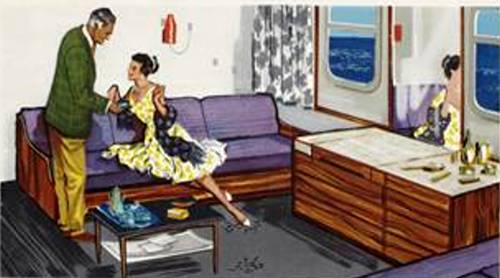
'The first impression on entering a double cabin such as
this is one of spaciousness. Next you notice the cool
but friendly colours, the gay furnishings. Then the
amenities . . . the air-conditioning, with finger-tip
control, the lighting, the large drawer and wardrobe
space, the hot, cold and iced drinking water, the
bathroom or shower (with which all first-class cabins
are fitted), the two-band radio, the universal razor
socket. The ceiling is flush, with no projections to mar
the clean lines of the cabin. Behind the bed head is a
compact panel containing light, radio and
air-conditioning controls. The fitted carpet adds a
final satisfying touch to a room that contains every
detail for individual comfort. And in the accommodation
and public rooms, new thinking has been equally applied
- and to the same end of comfort and pleasure. All
sections of this remark≠able ship reflect the infinite
care and expense lavished on them. Truly, a ship that
shapes the future.'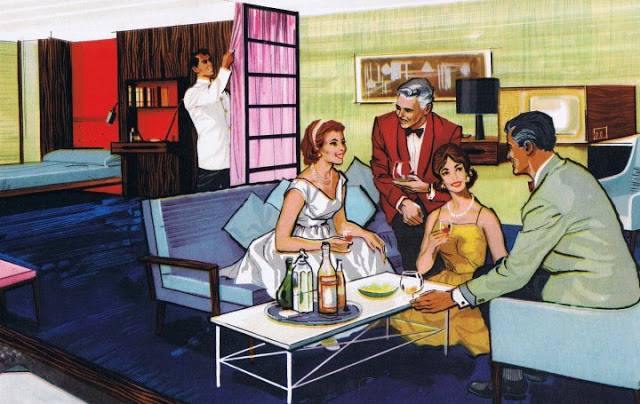
'Added to the normal charms and comforts, the Veranda Suites have the extra touch of distinction to make each a perfect haven of rest and enchant≠ment. There are four such suites in Canberra, and each comprises a double bedroom, with twin beds, leading off a veranda sitting room with large windows overlooking the sea. A private bathroom and toilet are adjacent. Two of these suites have communicating doors so that family travel presents no problem ... an idea haven for young and old. This spacious, sound-proofed apartment for gracious living includes among it; amenities a refrigerator, cocktail cabinet and television. On a slightly smaller scale, but with no fewer amenities, are eight de-luxe cabins, also twin bedded. These cabins can be converted into delightful sitting rooms during the daytime. Four of the de-luxe cabins have communicating doors.'
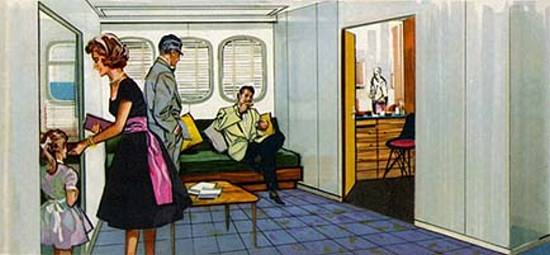
'The Court cabin is a brilliantly simple answer to the old problem of the 'inside' cabin. Along the ship's side are many courts, or verandas, with large windows overlooking the sea. Each Court cabin, similarly, has a window which looks out through the veranda to the ocean. Truly, each is a room with a view. No need to wonder, now, about the weather - you can see the sun is shining. And complete privacy is yours at the flick of a blind.'
Arrangement of Canberra's Court Cabins - viewed from outside
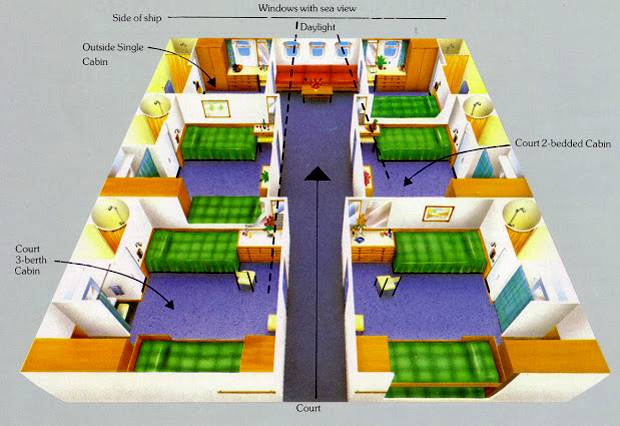
Viewed from inside...
'The Meridian Room - Canberra's main first-class lounge, is more than a room: it is the centre of a ship, designed for peace and the gentler displays of animation. Within its area is a writing room, a library, an annexe called the Menzies Room, and also the Century Bar. Large windows cater for those who, from their very comfortable easy chairs, wish to do no more than watch the sea go by. In the Century Bar an imaginative display of pictures captures life as it was lived one hundred years ago. From the Meridian Room a brightly- illuminated white staircase spirals up through three decks to the Crow's Nest, one of Canberra's most exciting features. Here you can look ahead for a not entirely welcome landfall, or behind and down at the friendly battles in the games arena. Either way the view is totally unobstructed. Comfortable seats, light furniture and warm carpeting make this a vantage point of unrivalled charm.
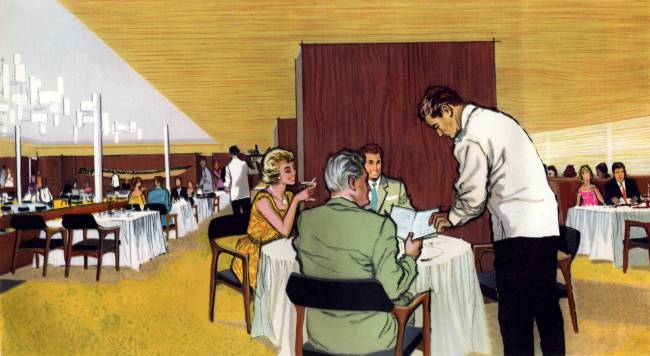
'The first class restaurant, a room of beauty and dignity, a room one hundred feet wide and seating - comfortably - 320 people. The dimensions do not suggest mere vastness however, for the skill of the designer has been employed to give the room more intimate proportions. This has been achieved largely by the use of strong pillar casings and high banquette seating, and by sinking the centre of the room in a 'well' and raising the central ceiling. A cluster of glowing cylinders, suspended like stalactites, hangs from the higher portion of the ceiling, and the lighting can be bright or subdued. The decorative themes are Polynesian. The food itself is international and, of course of a quality to tempt and satisfy sea sharpened appetites.'
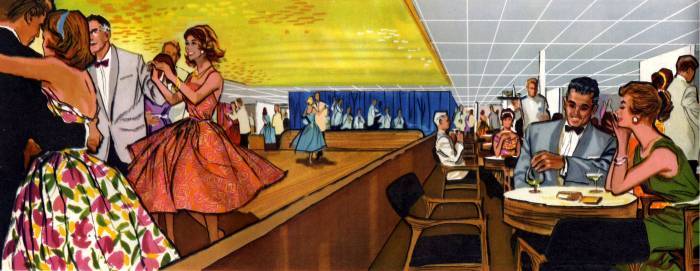
'The Bonito Club: Step inside from the pool area and you will find a gay, romantic atmosphere. Light filters down from the glass ceiling through honeycombed cells, and the tables have their own inner radiance glowing softly through translucent tops. Spotlighted against a richly-coloured aboriginal mural, the orchestra plays, summoning the dancers on to the smooth, sprung dance floor. At the after end of the room is a glass wall; this can be retracted vertically into the floor so that the club and lido areas can be merged into one.'
'The Pool : Most people will go far for their sunshine and their swimming, but in Canberra the sun and the fun are with you all the way. Step out of the Bonito Club on to the terraces surrounding a tiled pool....take a leisurely dip or simply laze on one of the sunbathing terraces. In a ship like Canberra travel is not a means to pleasure, but a sun-tanned pleasure in itself.'
The Tourist Class
Room for Two - The two-berth cabin has all the new, exciting features which make Canberra a delight for travellers - always airy and with the air always at the right temperature perhaps with a private shower and toilet - and certainly with beds so comfortable that they make sound sleep a habit.
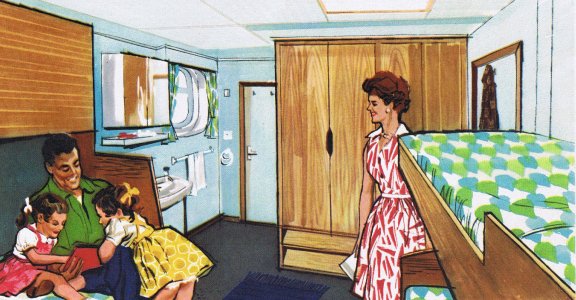
Four-berth Cabin - this is a Tourist-Class cabin, yet it has so many of the features often found only in First-Class accommodation: air-conditioning, hot, cold and iced drinking water, two-band radio. Walls and ceilings are covered by plastic - hygienic, easy to clean-and the furnishings are gay. Add to all this the ample drawer and wardrobe space, and the total is an ideal cabin for a young family.
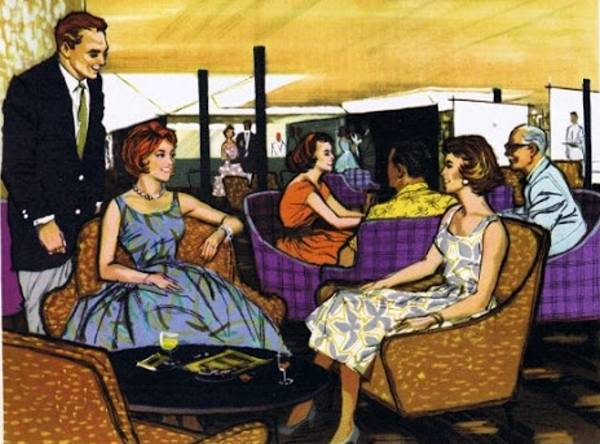
The William Fawcett Room - The large, open-plan main lounge perpetuates the name of the first P&O steamship. Open-plan because the space encompasses writing rooms, a library and a reading room, separated from each other by mirrored walls. This elegant room has a high, flat ceiling, rich wood veneers, and walls with gold and silver finishes. Added attraction is lent by the floor to ceiling sculptural features and the sparkling water-scapes. The furniture is designed for relaxation . . . comfortable easy chairs .... settees ... low, convenient tables . . . and a fitted carpet.
'Games Deck - For the young in heart of all ages, the Games deck is that part of the ship where the therapy of an ocean voyage can be seen to work. At first the games equipment is picked up with some diffidence, and land-locked muscles remain taught. But gradually, as sun and sea air work their magic, a gleam comes to the eye, forgotten skills return, and it is learned again that health is a positive thing and not mere truancy from seasickness.'
'Lido-Lazing.....from the shade of gay umbrellas, the rippling, sunlit surface of the pool beckons, and it is a dedicated sloth who can resist it. There are two swimming pools in tourist class, and the youngsters have their own safe paddling pool.'
Lets go to the movies!
'The Cinema - With seating for 340, the cinema is strategically placed so that it can serve passengers in both classes. For lighting, there are two batteries of spotlights placed at the back. The beams are thrown on to the ceiling which acts as a reflector to light the whole interior. As the illustration shows, it is equipped for Cinemascope productions as well as Stereophonic sound. Excellent viewing is matched by perfect acoustics. (Quite apart from the cinema, television programmes can be seen in some of the public rooms.)'
Please Note: All the above, artists impressions and text, are taken from P&O's 1961 Canberra introductory brochure, designed by Embassy Arts Limited and printed in England by Print Planning (London) Limited. The text is verbatim, with some words and phrases deemed unacceptable by today's standards. Eg: The use of Gay to denote 'full of or disposed to or indicating mirth; light-hearted, carefree, sportive - OED.
I particular like the following comments: ' health is a positive thing and not mere truancy from seasickness' and 'it is a dedicated sloth who can resist it (lido-lazing !)'
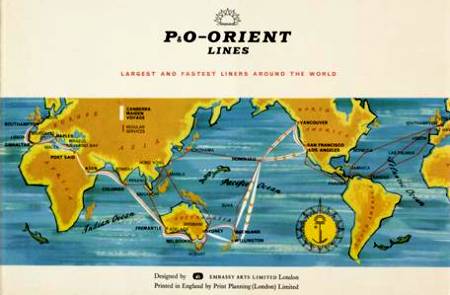

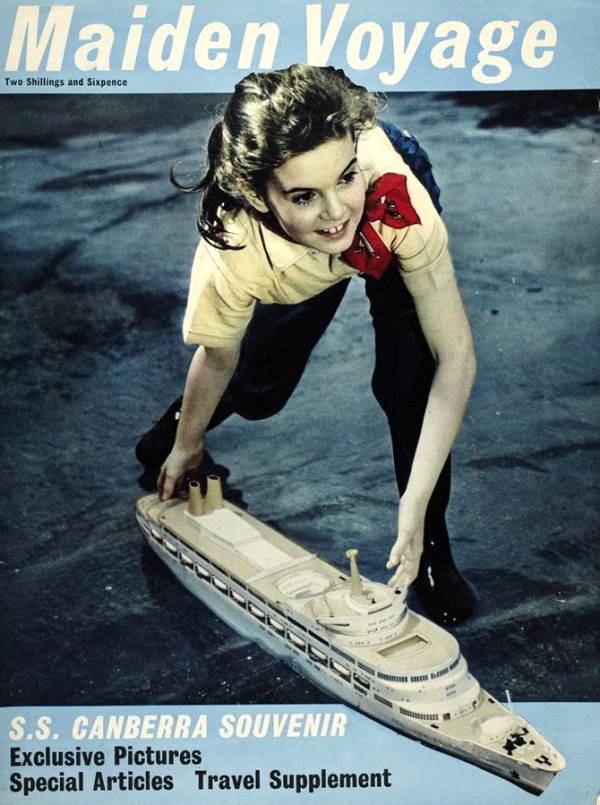
P&O's management were justly proud of their fine new ship and commissioned a brochure to celebrate her arrival on the scene. Many of the companies involved in her construction and fitting out were proud to advertise their products and involvement.
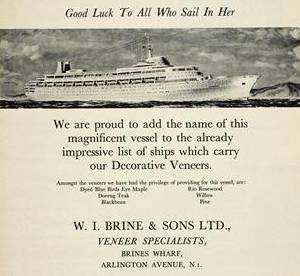
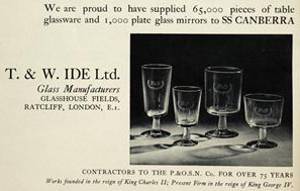
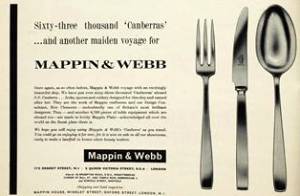
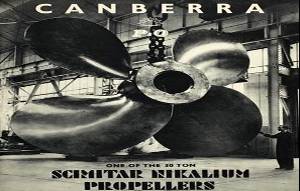
Part Two of ' Canberra' is now online!
Click the link above to get there!
